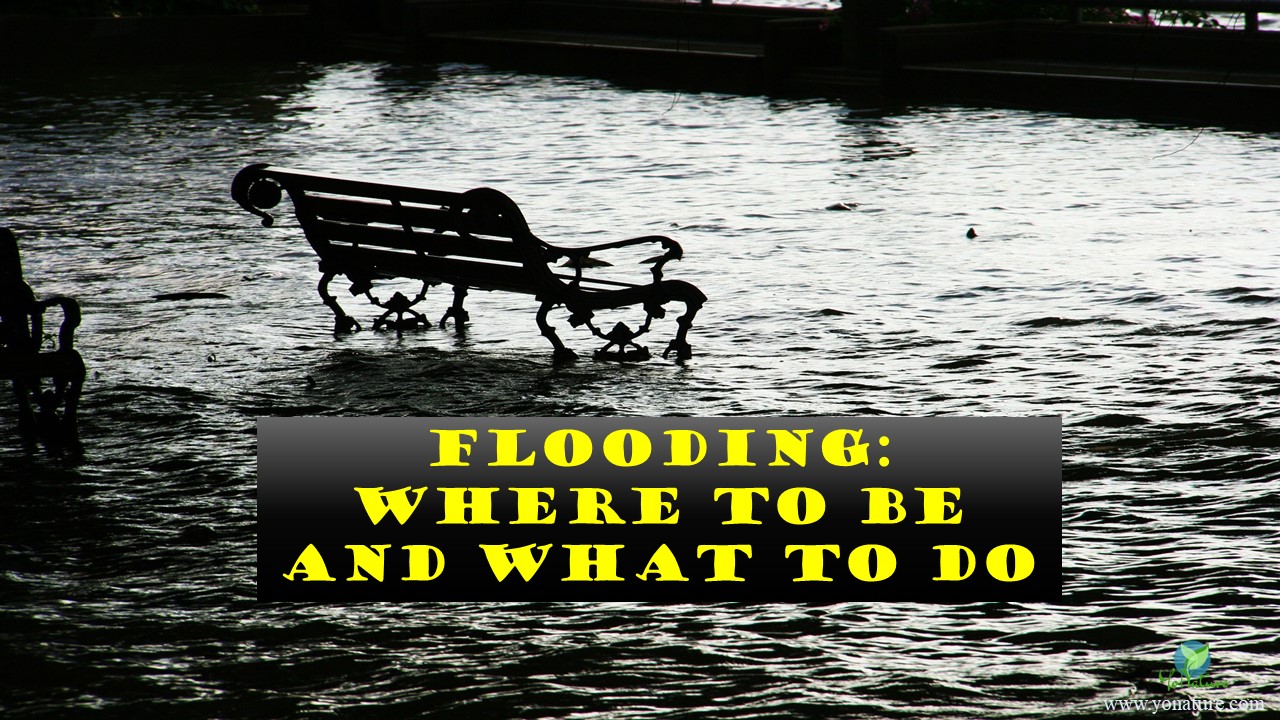Flooding: Types, Dangers and Mitigation Measures

Flooding occurs when dry land is submerged in water. This water may come from heavy rainfall spilling over river banks, blocked drainage, storms, tsunamis and oceanic waves, melting ice, or even a break in a river dam. The intensity of a flood, in any given area, depends on its location, geology, vegetation, drainage systems in place, amount of water and/or period of rainfall.
Types of flooding
There are basically 3 main types of flooding:
- Fluvial flooding (river) – it occurs due to the overflowing of river beds during heavy rainfall, ice melt or even jammed waterways.
- Pluvial flooding (surface water) – this type of flooding occurs when the ground can no longer absorb water or when drainage systems have reached their limits.
- Coastal flooding (coasts) – coastal flooding is when coastal land is inundated with water coming from the sea during tsunamis, storms and abnormally big waves.
Natural flooding, like river bank overflow, helps bring nutrients to the dry parts of the land. In this way, wetlands are formed; they act as pollutant sinks or provide food to other organisms.
However, flooding can be quite disastrous as well. For instance, the deadliest flood that occurred in China in 1887, had a death toll of up to 2 million people [1]. Overflowing of the Yellow River during heavy rainfall caused massive destruction in an instant. Not only did people die directly by the flood, but also by the famine and disease outbreak that followed.
Duration of a flood
Flooding can occur over a long period of time: as long as it takes water to seep into the ground and subsequently to overflow. In this case, people living in the vicinity have ample time to flee and protect their properties if possible. It can take weeks to months for the water levels to get back to normal.
Flash floods, on the other hand, occur swiftly. They are normally the result of a heavy downpour within 3 hours [2]. They can also be caused by broken dams, melting snow or jammed canals. Flash floods can be disastrous as they occur unexpectedly. Cities and urban areas are more affected than the countryside as they have fewer evacuation systems; cemented surfaces also prevent water to infiltrate the ground.
Dangers of flash floods
Because they are difficult to predict, flash floods can cause considerable damage to an area.
- The force of running water can drag boulders from mountains alongside mud thus causing landslides.
- They can also destroy buildings,
- damage and drag away parked vehicles,
- knock down trees,
- immerse low lying houses and
- drown people caught unaware in their flow.
Managing floods
- It is vital to carry out an Environmental Impact Assessment of a project before embarking on it.
- Buildings have to be built on pillars using water-resistant materials in risk-prone areas.
- Proper and clear drainage systems have to be put in place in these places.
- Zoning systems forbidding construction near river banks can reduce flooding impacts.
- Levees can be constructed to protect property though this may cause water to accumulate on the other side.
- The best solution, however, is to prohibit development next to flood-prone areas.
Mitigation measures: What to do
Before the flood:
- Evaluate your risk of flooding (nearby watercourses, possibilities of crammed canals).
- Store clean water as water distribution may be interrupted.
- Keep a stock of food, batteries for flashlights, candles and cooking gas.
- Have a first aid kit nearby.
- Park your car in your garage or in a secure place; tie your bikes and cycles with metal chains in secure places.
- Clear your drainage traps to prevent overflow.
During the flood:
- Be alert; listen or watch the news for updates.
- Move out of flooding areas; go in the opposite direction of the flood, choose high altitude locations.
- Never drive through flooded passages. Floods can easily sweep cars away; check your surroundings and if the danger is imminent, get out of the car and seek higher grounds.
- Never park near water bodies like rivers and canals.
- Evacuate as you are told to do so and move to safe grounds; keep a firm grip on children.
- If water reaches above your ankle, stop and move in the opposite direction; the impact of oncoming water can knock you down and carry you away.
- Save yourself first; better lose your money than your life.
After the flood:
- Boil water before using.
- Throw away water that has been in contact with flood water.
- Dry electrical appliances before using.
- Use flashlights to check out damage. Do not use candles and matches as there may be spilt flammables.
- Seek medical care if necessary.
References:
- Vega., E. The worst floods in history. Ranker. [Online]. Available at https://www.ranker.com/list/worst-floods-in-history/eric-vega [Accessed 17/022019]
- What is flash flooding? National Weather Service. [Online]. Available at https://www.weather.gov/phi/FlashFloodingDefinition [Accessed 17/022019]
- Image credit: terimakasih0, https://pixabay.com/

Pingback: Effects of landslides: Positive, Negative, Examples - Yo Nature
Pingback: The rivers of Mauritius - Yo Nature
Pingback: Extreme Weather: Flash floods become frequent in Mauritius - Yo Nature